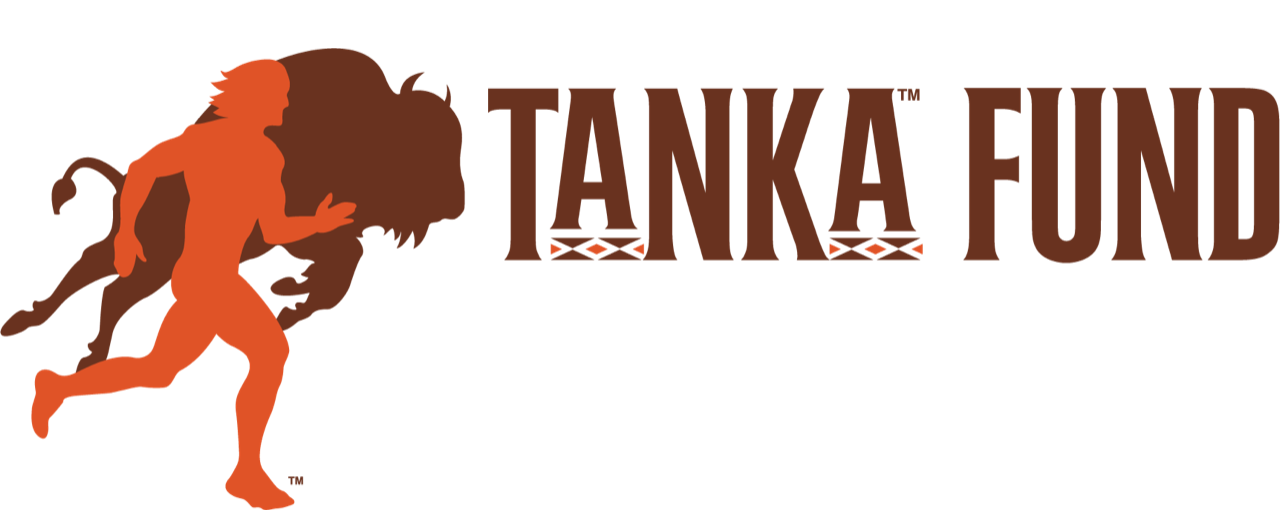Teaching youth to return to the Buffalo
Bringing Buffalo into the classroom has recently come to the forefront of conversations about caretaking these animals. However, Tanka Fund ranchers like Charles “Bamm” Brewer have been committed to that mission for years. He partners with nearby schools to help Native youth reconnect with their Buffalo relatives through hands-on harvest lessons, prayer, and traditional food practices.
“It ends up being instinct, and that’s how we teach it to the schools,” Bamm shared. “That it’s inside every one of them — that the Buffalo is a relative of ours, and we say a blessing to thank them. It’s a way of life.”
Fortunately, Bamm isn’t alone in educating youth about cultural harvests. Ron Brownotter of Brownotter Ranch on the Standing Rock Reservation in South Dakota also opens his ranch to students for hands-on learning. Most recently, he welcomed students and faculty from North Dakota State University for a full day of Buffalo harvest education and cultural teachings.
Celebrating 5 years of Makoce
This month, we’re proud to support Makoce Agriculture Development as they celebrate five years of growing Indigenous food systems, uplifting community voices, and honoring our relationship with the land.
Today, we join them in person for their 5-Year Anniversary Celebration & Open House on the Pine Ridge Reservation.
Makoce Agriculture Development is a Native-led organization committed to advancing Indigenous agriculture that supports healthy communities, sustainable economies, and the regeneration of land and traditions. Tanka Fund Board Member Nick Hernandez serves as Makoce’s CEO and president.
Through our current grant partnership, Tanka Fund is conducting seed trainings and soil sampling with our ranchers, while also participating in community events, cultural harvests, conferences, and collaborative team-building efforts.
We’re honored to walk alongside Makoce in this work and look forward to what the next five years will bring.
Tanka Fund in the News
Tanka Fund has recently been featured in the media, sharing our mission and goals for bringing Buffalo back to Native lands, lives, and economies. Our recent coverage is linked below:
How fire helps bring the prairie back to life
While fire is often viewed as destructive, prescribed fire is an ancient and powerful tool. Indigenous peoples have long used it to renew grasslands, nourish herds, and boost biodiversity. Fire is a tool, not a threat, when used correctly. It’s part of the cycle that keeps our lands and herds healthy. We’re not just reviving the prairie; we’re honoring the practices that shaped it.
At Tanka Fund, one of the ways we support our rancher partners is by offering technical services through our team of experts who work directly with ranchers to assess pasture health and ensure the land is thriving for Buffalo. One of our rancher partners, Blake Folis, burns his Native tallgrass prairie every year with the help of his neighbors, keeping it in a highly productive diverse state, free of woody species.
Interested in adding prescribed fire to your grazing plan? Contact Tanka Fund at info@tankafund.org for on-site guidance and burn-planning support.
The power and purpose of Buffalo rutting season
Buffalo rutting season stretches from late June through early September, with the most intense activity in July and August.
As the rut begins, mature bulls shadow cow-calf groups, coat themselves in dusty wallows, bellow across the prairie, and clash head to head for breeding rights. Their low calls and the crack of horn on horn can travel for miles, a reminder of their power and presence.
For the Lakota people, tatáŋka remains both relative and provider, and the rut marks a season of renewal on the grassland. Fresh grazing patterns trim dominant grasses, while sharp hooves break the soil crust so rain can soak in. Bulls deepen wallows that trap moisture and scatter seeds, creating pockets where wildflowers, insects, and ground-nesting birds flourish. Researchers have linked these behaviors to higher plant diversity and healthier habitat for a range of prairie species.
Even familiar animals can act unpredictably during the rut. The National Park Service advises staying at least twenty-five yards (twenty-three meters) from Buffalo and giving extra space to any bull that is head-shaking, pawing, or making short rushes.
Tanka Trivia
Last Month’s Trivia Question:
Which two allied leaders famously led their warriors to defeat Custer’s 7th Cavalry on Victory Day, which honors the 1876 Lakota and Cheyenne victory at Greasy Grass (Battle of the Little Bighorn)?
Answer: Crazy Horse and Sitting Bull
Thank you to everyone who submitted their answers!
This Month’s Question:
Buffalo go by many names, but what is the technical scientific name for Buffalo?
Think you know? Email your answer to info@tankafund.org for a chance to win exclusive Tanka Fund merch!
